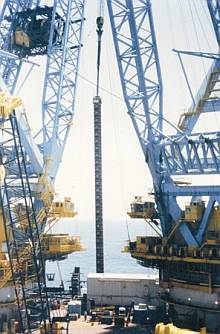SA to publish carbon-storage atlas in 2010
|
- By Terence Creamer
Several carbon-heavy South African corporates have thrown their collective weight behind a R2-million initiative to develop a so-called ‘South African Carbon Dioxide (CO2) Storage Atlas'.
The project, which is backed by Sasol, Eskom, PetroSA, Anglo American and the South African National Energy Research Institute (Saneri), will use existing geological information to identify potential sites for the possible future storage of CO2.
The Council for Geoscience and the Petroleum Agency South Africa plan to publish the initial assessment of storage potential by April 2010.
Site identification is viewed as particularly crucial to prepare the way for the deployment of carbon capture and storage (CCS) as a mitigation measure for the lowering of greenhouse gas emissions from the country. CCS has itself been identified as a priority technology for South Africa, given the carbon intensive nature of its economy. In fact, South Africa is one of the world's most "emissions intensive" economies, emitting about 400-million tons of CO2 yearly, which is about 1% of total global emissions.
Saneri estimates that about 60%, or 249-million tons, of these emissions to be nearly immediately "sequestrable", with the main challenge now being the identification of suitable storage sites, such as deep saline aquifers.
The atlas is, therefore, viewed as a crucial first step towards a larger research and development thrust designed to develop the scientific and human resource capacity necessary to create the platform for commercial CCS use.
Saneri Senior Manager: Fossil Fuels Dr Tony Surridge says that the next step would involve the creation of a Centre for Carbon Capture and Storage early in 2009.
The centre will have the mandate to prepare the way for the possible commercial implementation of CCS as from 2016.
This would mean capturing CO2 from industrial flue gases and then geologically storing it by compressing it into a liquid form and injecting it into deep geological formations, such as saline reservoirs, coal seams, or depleted oil and gas fields.
Surridge says that, once the atlas is completed, there should be urgent moves to identify sites for further seismic work and drilling programmes.
Unlike many in the industry, Surridge is also sanguine about the South Africa's geological capacity to store CO2. In fact, he says that preliminary geological studies have highlighted deep saline aquifers that have the potential to store between four and 11 times South Africa's annual sequestrable CO2 emissions for the next 100 years.
He indicates that the Karoo Basin holds much promise as do the spent oil and gas structures offshore of Mossel Bay.
But he agrees that the potential to use the injection of CO2 to enhance oil or gas recoveries is low. For this reason, CCS will probably hinge on the future regulatory and tax regime, with companies such as Eskom and Sasol likely to pursue the technology either as a way of mitigating against carbon taxes or as a way of earning carbon credits.
"Worldwide, storage reservoirs are commonly associated with the sedimentary basins in which oil and gas occur. "South Africa unfortunately lacks natural world-class storage reservoirs, but the onshore central basin of the Karoo Supergroup with its substantial sedimentary formations may offer storage opportunities. Offshore sedimentary rocks along the coastline also hold some potential for storage," he explains.
Surridge says that the atlas is also critical for moving local research from its current stage of tracking international developments to understanding the real potential for CCS domestically.
The atlas will illustrate the distribution and ranking of potential geological CO2 storage reservoirs in South Africa, including estimated CO2 storage capacities, the main emission sources, location of industrial hubs, transportation pipelines and other factors that may have a bearing on storage feasibility.
Source: Engineering News Online
Click here for
related content











